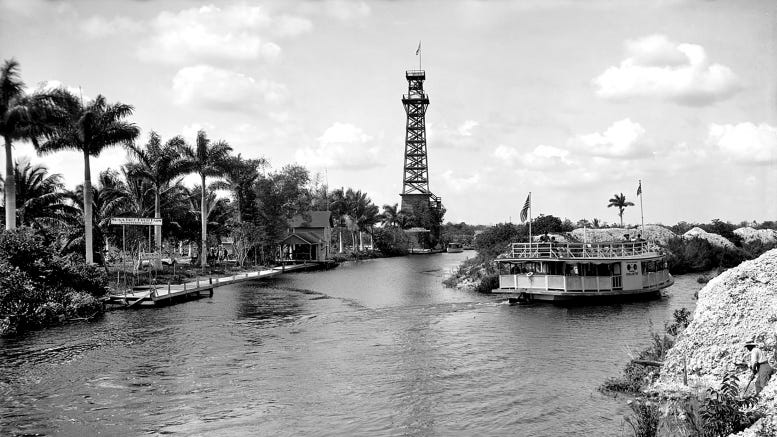The Miami River Upstream (1896 - 1915)
The story of the Musa Isle tourist attraction along the Miami River in Florida
It is hard to imagine a time when today’s NW 27th Avenue was once considered the edge of the Everglades. The original tributaries of the Miami River once included a very active north fork that included a majestic rapids which fed fresh water from the river of grass to the Magic City’s serpentine stream. Over the course of time, development in and around the tributary contributed to the disappearance of the natural flow of water from the rapids into the river.
Prior to decades of unfettered development, taking a trip down the Miami River provided a fascinating journey for visitors new to southeast Florida. Boat excursions down the watercourse would allow tourists to discover alligator wrestling, exotic fruits, and observation towers providing an unobstructed elevated view of a pristine yesteryear. There were several early tourist stops along the river that offered visitors the subtropical experience they traveled to Miami to find.
Keep reading with a 7-day free trial
Subscribe to Miami History to keep reading this post and get 7 days of free access to the full post archives.




